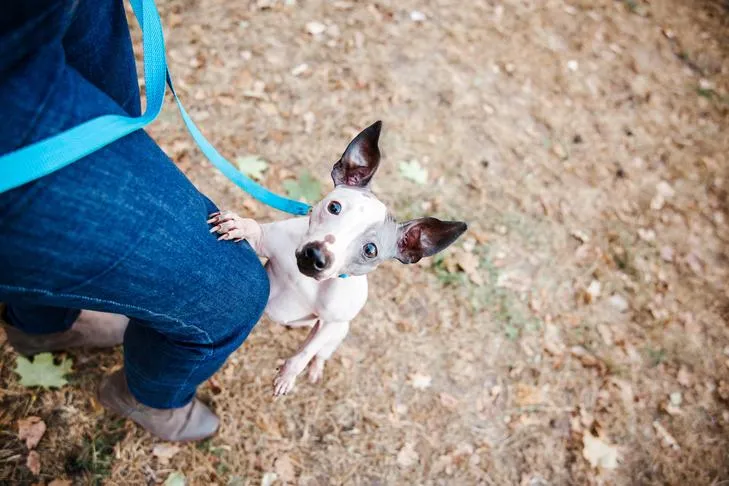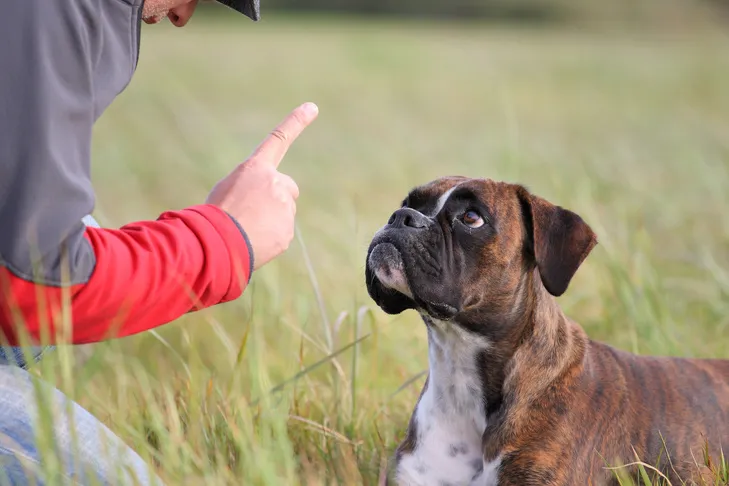Dealing with a dog that constantly jumps up to greet people can be a frustrating and even dangerous behavior. While your canine companion is likely just trying to say “hello” and get your attention face-to-face, large breeds can inadvertently knock people over, posing a risk to children and the elderly. Even smaller dogs can leave scratches or muddy paw prints on clothing. The good news is that you can effectively teach your dog an alternative, more polite way to welcome you and guests. This guide provides actionable strategies to help your dog understand and adopt appropriate greeting behavior, ensuring a safer and more enjoyable interaction for everyone.
The key to stopping this common dog behavior problem is to teach your dog a clear greeting rule, such as “keep all four paws on the floor” or “sit for greetings.” This provides your pet with an incompatible alternative behavior, meaning they cannot jump and perform the desired action simultaneously. Consistent application of these rules will empower your dog to understand exactly how to greet humans politely and earn the attention they seek. Learning to manage challenging behaviors like this is crucial for a well-behaved companion, much like understanding what to do when puppy pulls on leash.
1. Reward Four Paws on the Floor
The most effective training approach is to teach your dog what to do, rather than just what not to do. When addressing jumping, establish a clear rule: your dog must keep all four paws on the floor, or sit, before receiving any attention. Dogs are intelligent creatures who learn by association. If they understand that attention is only given when they adhere to your greeting rule, they will quickly adopt this behavior. Consistency is paramount; avoid giving in to jumping, even occasionally, as this will confuse your dog and slow down the learning process. Always reward the desired behavior to reinforce positive associations.
2. Provide Immediate Attention for Correct Greetings
Dogs are highly motivated by rewards, especially your attention. As soon as your dog’s front feet touch the floor or they sit appropriately, immediately provide praise, petting, or a small treat. Timely positive reinforcement is crucial, especially during the initial learning phases. Delaying your greeting, perhaps while you take off your coat or shoes, can lead to your dog becoming impatient and reverting to jumping to capture your notice. Make sure the reward for proper behavior is instant and noticeable to your dog, strengthening the connection between their actions and your positive response.
3. Remove Attention When Your Dog Jumps
Conversely, the only way to eliminate jumping is to remove the reward it typically brings – your attention. Never reinforce a behavior you wish to stop. If your dog jumps on you, calmly turn your back or walk away. This clearly communicates that jumping results in the loss of what they desire. The moment your dog returns to the “four on the floor” position, turn back and quietly offer praise and petting. This technique helps your dog understand that their jumping behavior acts as a switch, turning your attention off, while polite greetings turn it on. This clear consequence helps them make the right choice.
4. Set Your Dog Up for Success with Training Aids
While ignoring unwanted behavior and rewarding correct greetings is effective, it can involve a period of trial-and-error that might be frustrating for your dog. You can expedite the learning process by proactively setting your dog up for success. For instance, if your rule is to sit for greetings, ask your dog to sit the moment you enter the door. If “four on the floor” is your preference, encourage them to stay standing.
A highly effective method to prevent jumping is to scatter treats on the floor as you approach. Most dogs find delicious treats irresistible, and they cannot jump while they are focused on sniffing and eating goodies from the ground. Be quick to provide the treats before your dog even considers jumping. This way, you reward the “four on the floor” behavior with both your attention and food. As your dog consistently grasps this greeting rule, you can gradually phase out the use of treats, relying more on verbal praise and petting.
 A Welsh Springer Spaniel playfully jumping outdoors, showcasing its energetic nature
A Welsh Springer Spaniel playfully jumping outdoors, showcasing its energetic nature
5. Be Consistent with Rewards for Proper Greetings
Your dog will master appropriate greeting behavior much faster if their actions consistently and immediately influence your attention. When their front feet are on the floor, they gain your attention; when they jump, your attention is withdrawn. This means you must always reward your dog when they follow your greeting rule. Even if you are annoyed because they jumped for several minutes prior, do not withhold your attention once they finally settle. Inconsistency will confuse your dog and undermine the training. Always reinforce the correct behavior without fail to ensure clear communication and faster learning.
6. Avoid Physical Reprimands Like Grabbing or Pushing
Remember that your dog jumps to gain your attention. Any physical interaction, even if negative, like grabbing their paws, holding them, or pushing them away, still counts as attention. This means these actions can inadvertently reinforce the very behavior you want to eliminate, potentially leading to increased jumping in the long run. Moreover, for many dogs, such physical engagement can be misinterpreted as an invitation to roughhouse play, causing them to return with more vigor, thinking it’s part of a game. This is especially important when considering more advanced training like how to train your puppy to be a service dog, where trust is paramount.
7. Do Not Use Your Knee to Block Jumps
The old advice of raising your knee to block your dog’s chest when they jump is often counterproductive. Similar to physical reprimands, some dogs might interpret this as attention or a wrestling game, intensifying the jumping behavior. More importantly, for most dogs, this action can create distrust and significantly erode the human-canine bond. Your dog is merely trying to express happiness and greet you, and responding with physical force can be perceived as punishment, potentially causing injury. A breakdown in trust can lead to other behavioral issues, such as a reluctance to come when called, or difficulties with other basic commands like potty training a 12 week old puppy.
 An American Hairless Terrier enthusiastically jumping up on its owner's leg outdoors during a play session
An American Hairless Terrier enthusiastically jumping up on its owner's leg outdoors during a play session
8. Maintain Low-Key Greetings During Learning
Dogs can struggle to control their excitement when greeting their beloved humans. Resisting the natural urge to jump and instead adhering to a new greeting rule requires significant emotional self-control. To make it easier for your dog, keep greetings low-key, especially during the initial training period. Dogs are adept at reading our emotions, so if you’re overly excited, they will mirror that energy. Instead, maintain a calm and quiet demeanor, even when praising them for good behavior. As your dog begins to grasp the concept, you can gradually increase your enthusiasm, eventually matching their excitement without encouraging jumping.
9. Prevent Jumping on Guests with Management Techniques
Your dog’s jumping behavior isn’t solely reinforced by you. Other family members, visitors, and even strangers can inadvertently reward jumping if you’re not diligent. To prevent this, implement effective management techniques. Using a leash when guests arrive can restrict your dog’s ability to approach and jump. Even better, teach your dog a “place” command, sending them to a mat or bed, or utilize crate training to keep them comfortably contained away from the door during greetings. Baby gates can also be effective tools to block off entryways, preventing access to visitors until your dog is calm and ready for a controlled greeting. This proactive approach helps manage their behavior, similar to strategies for how to train your dog to pee on pad.
 A man is training a Boxer dog to lay down outdoors, demonstrating patience and technique
A man is training a Boxer dog to lay down outdoors, demonstrating patience and technique
10. Educate Guests and Strangers on Your Greeting Rules
Don’t hesitate to clearly communicate your dog’s greeting rules to guests and strangers. While your dog is still learning, ask people to completely ignore your dog unless you explicitly give permission. It’s often best to avoid interactions with strangers until your dog has mastered polite greetings with cooperative friends and family. When encountering unfamiliar people, use a “watch me” cue or distract your dog with a hand touch command or a favorite toy until the stranger has passed. This prevents potential setbacks in training and reinforces the desired behavior. These controlled interactions are vital, much like the careful steps involved in how to potty train a rescue dog.
By consistently applying these methods, you can successfully teach your dog How To Break A Dog From Jumping Up and instead offer a polite, four-on-the-floor greeting. This not only enhances safety and comfort for everyone but also strengthens the positive bond you share with your well-mannered canine companion.
